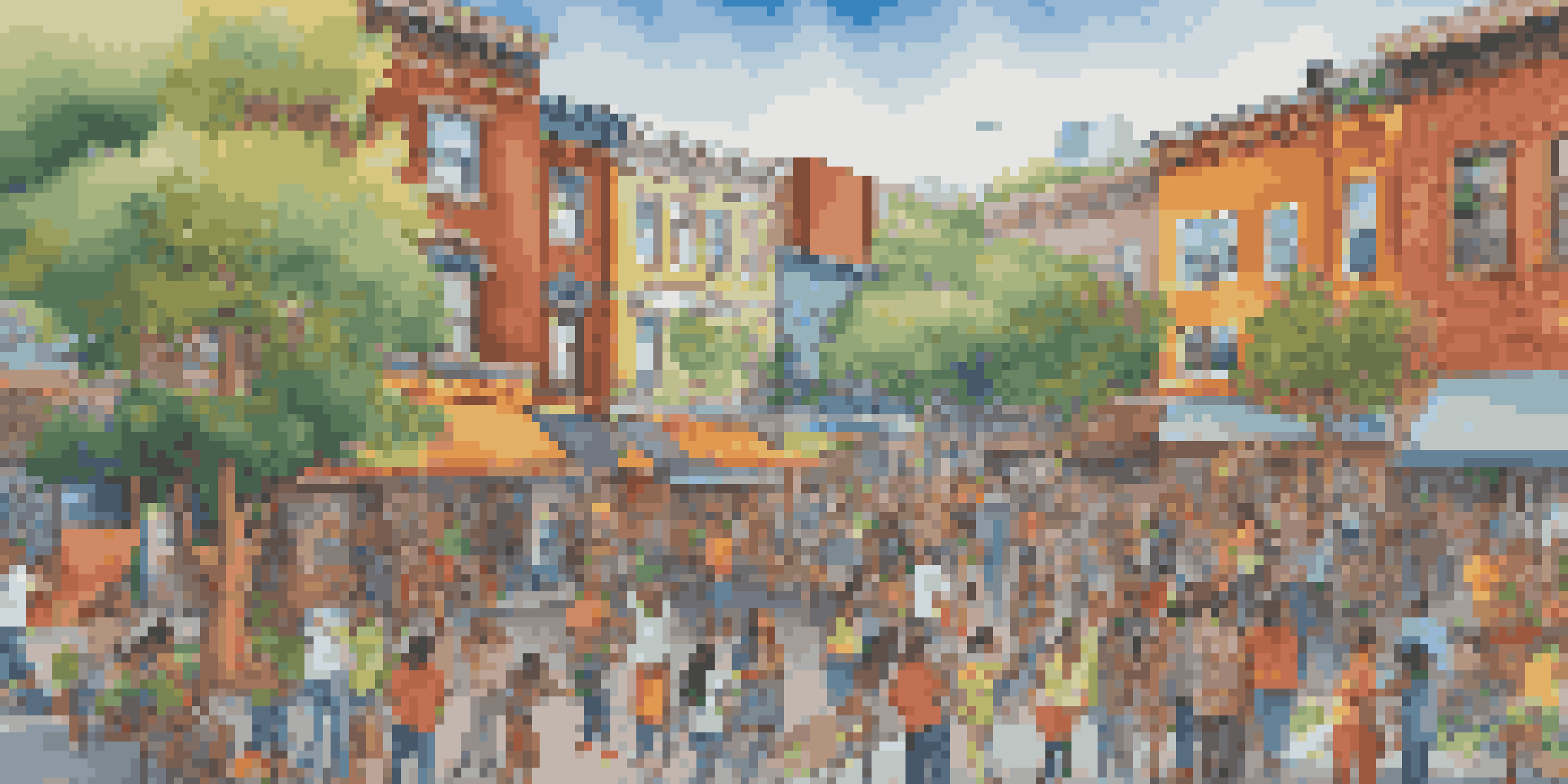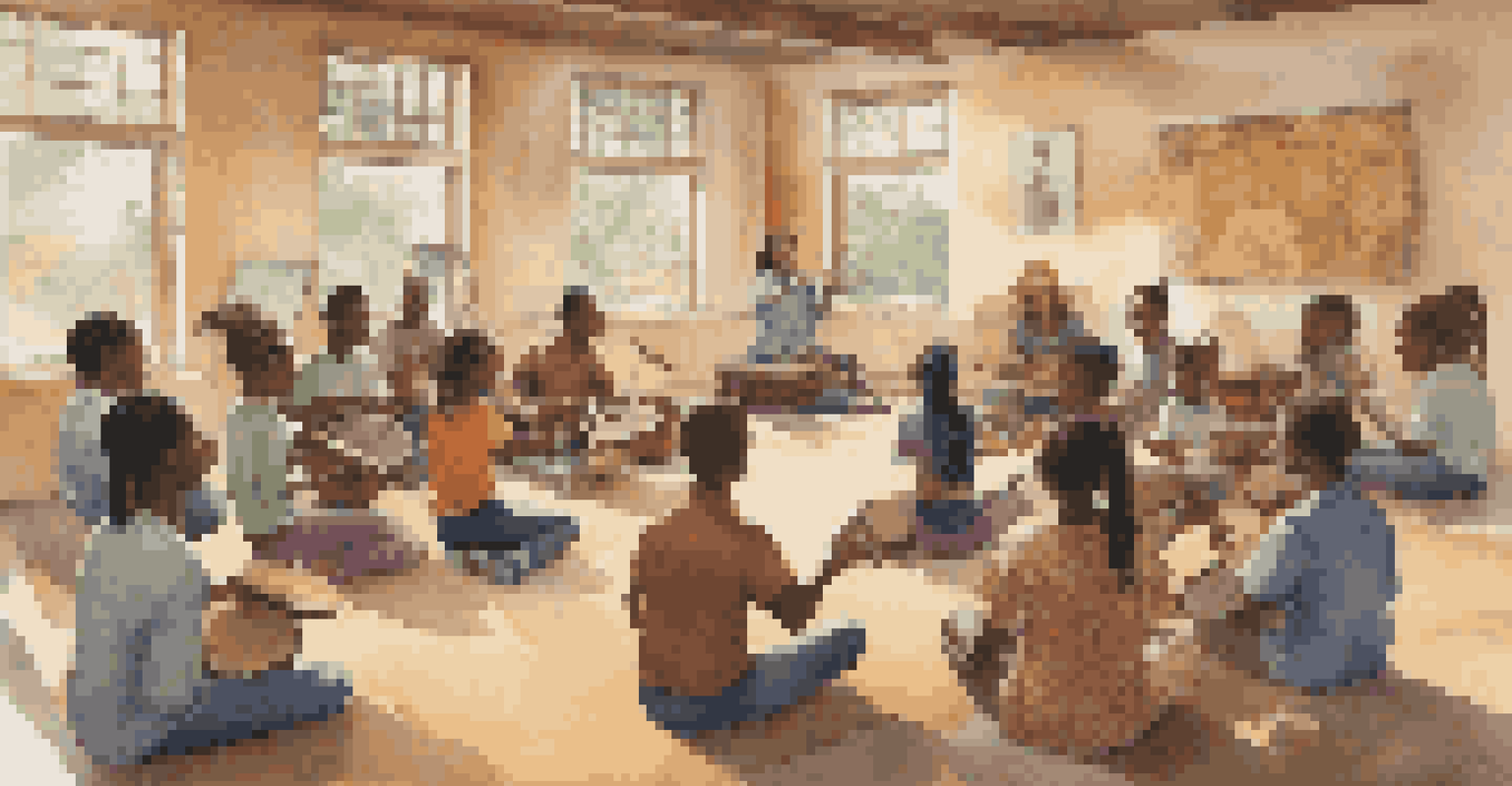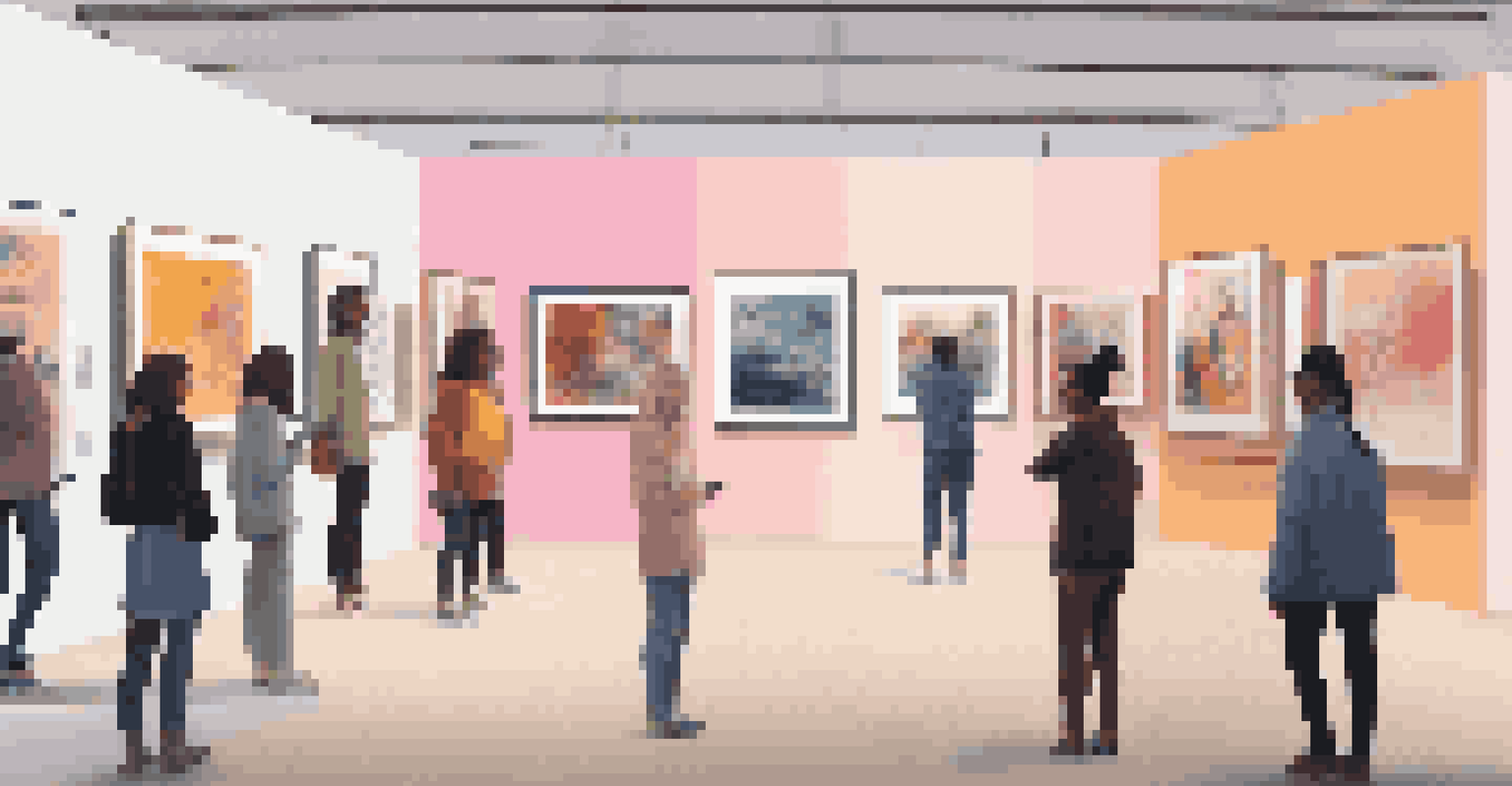The Role of Art in Bridging Cultural Divides in Society

Art as a Universal Language of Expression
Art transcends spoken language, allowing individuals from different backgrounds to connect on a deeper emotional level. Through paintings, music, dance, and other forms of artistic expression, people can share their stories, experiences, and emotions without the need for words. This universality makes art an effective tool for fostering empathy and understanding among diverse cultures.
Art enables us to find ourselves and lose ourselves at the same time.
For instance, consider how a piece of music can evoke feelings of joy or sorrow, regardless of the listener's native language. When people experience art together, they share in the emotions it conveys, creating a communal bond that can bridge cultural divides. This shared experience often leads to meaningful conversations about each other's backgrounds and perspectives.
Ultimately, the ability of art to communicate complex feelings and ideas in an accessible way highlights its role as a vital connector in our increasingly globalized world. By appreciating art from various cultures, we can cultivate a richer understanding of humanity as a whole.
Shared Artistic Experiences Foster Unity
Participating in artistic events such as festivals, exhibitions, or performances creates opportunities for individuals from different cultures to come together and share their unique traditions. These shared experiences foster a sense of community and belonging, breaking down barriers created by stereotypes or misunderstandings. When people engage with art collaboratively, it encourages open dialogue and exchange of ideas.

Take, for example, community art projects that unite local artists and residents to create murals or sculptures. These collaborations not only beautify neighborhoods but also allow participants to learn from one another’s cultural practices and artistic techniques. Such initiatives often lead to friendships and networks that extend beyond the project itself.
Art Connects Across Cultures
Art transcends language barriers, fostering emotional connections and understanding among diverse cultures.
As these connections deepen, they can challenge preconceived notions and promote greater acceptance of diversity within society. The bonds formed through shared artistic experiences are often lasting and can have a ripple effect, inspiring others to engage in similar initiatives.
Art as a Reflection of Cultural Narratives
Art often serves as a mirror reflecting the stories, struggles, and triumphs of different communities. Through storytelling in visual arts, literature, and performance, artists convey the rich tapestry of their cultural heritage, allowing others to gain insight into their lives. This reflection can prompt viewers to reconsider their own biases and assumptions.
The arts are not a luxury. They are a necessity for our society, serving as a bridge to cultural understanding and human connection.
For instance, a film that portrays the daily life of a marginalized community can shine a light on issues often overlooked by mainstream media. By humanizing these narratives, art invites us to empathize and understand cultural contexts that might be foreign to us. Such exposure is crucial in fostering a more inclusive society.
Moreover, when cultures share their narratives through art, it opens up avenues for dialogue and collaboration. These conversations can lead to a greater appreciation of cultural diversity and a commitment to social change, reinforcing the idea that every story is valuable.
Art Education: A Gateway to Cultural Awareness
Integrating art education into school curricula can significantly enhance cultural awareness among students. By exploring various artistic traditions and practices from around the world, students can develop a more nuanced understanding of different cultures. This educational approach not only enriches their knowledge but also promotes respect and appreciation for diversity.
Imagine a classroom where students learn about African drumming while also discussing its historical significance and cultural roots. Such lessons can ignite curiosity, encouraging students to explore further and engage with different cultural practices. This educational journey can significantly diminish prejudices and stereotypes.
Shared Experiences Build Unity
Participating in collaborative art projects cultivates community and breaks down stereotypes through shared artistic experiences.
Furthermore, art education can empower students to express their own cultural identities, fostering pride and confidence. When young people see their own backgrounds reflected in the art world, it strengthens their sense of belonging and encourages them to share their stories with others.
Digital Art: Bridging Global Cultural Divides
In our digital age, art has transcended geographical boundaries, allowing for unprecedented access to diverse cultural expressions. Online platforms enable artists from all over the world to share their work, ideas, and stories with a global audience. This digital landscape fosters cross-cultural interactions that can inspire collaboration and understanding.
Consider social media, where artists showcase their creations and engage with audiences across continents. A painter in Brazil might connect with a photographer in Japan, exchanging techniques and cultural insights. This connectivity not only enriches their work but also cultivates a global community that celebrates diversity.
However, this digital sharing comes with responsibility; artists and audiences alike must respect and honor the cultural origins of the art they encounter. By fostering mindful engagement with digital art, we can further bridge cultural divides and promote a more inclusive art world.
Art as a Tool for Advocacy and Social Change
Art has long been a powerful medium for advocating social change and raising awareness about cultural issues. Artists often use their platforms to address injustices, challenge stereotypes, and encourage dialogue on pressing societal matters. This advocacy can inspire audiences to reflect on their roles in fostering cultural understanding.
For example, street art has become a prominent form of expression in many cities, tackling issues such as inequality and discrimination. These visual statements can provoke thought and mobilize communities to take action, bridging cultural divides through shared values and goals. The boldness of public art often ignites conversations that might be uncomfortable but are necessary for progress.
Art Education Enhances Awareness
Integrating art education into curricula promotes cultural awareness and respect, helping students appreciate diversity.
By amplifying marginalized voices through art, we can create a more equitable society. This transformative power underscores the importance of supporting artists who are committed to using their talents for advocacy and cultural exchange.
The Future of Art in Cultural Connection
As society continues to evolve, the role of art in bridging cultural divides will remain vital. Emerging technologies and innovative artistic practices are reshaping the way we interact with art, paving the way for new forms of cultural exchange. From virtual reality experiences to interactive installations, the future of art promises to be even more inclusive and engaging.
Moreover, as global challenges such as climate change and social justice unite people across cultures, art will play a crucial role in uniting diverse voices. Creative collaborations that address these pressing issues can foster solidarity and understanding, strengthening the bonds between different communities.

Ultimately, the future of art lies in its ability to adapt and connect us in meaningful ways. By celebrating diverse artistic expressions and fostering dialogue, we can continue to use art as a powerful tool for bridging cultural divides, creating a more harmonious and understanding world.